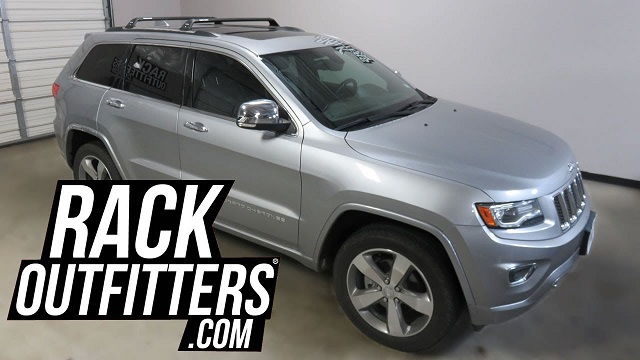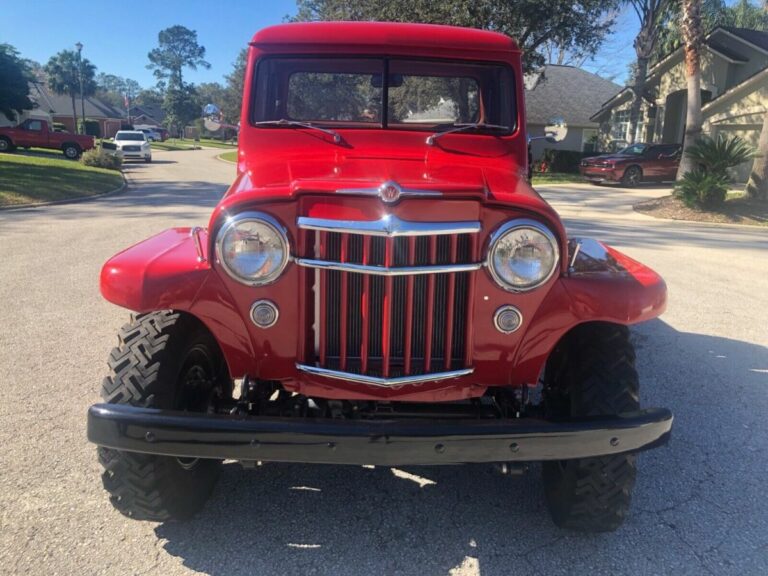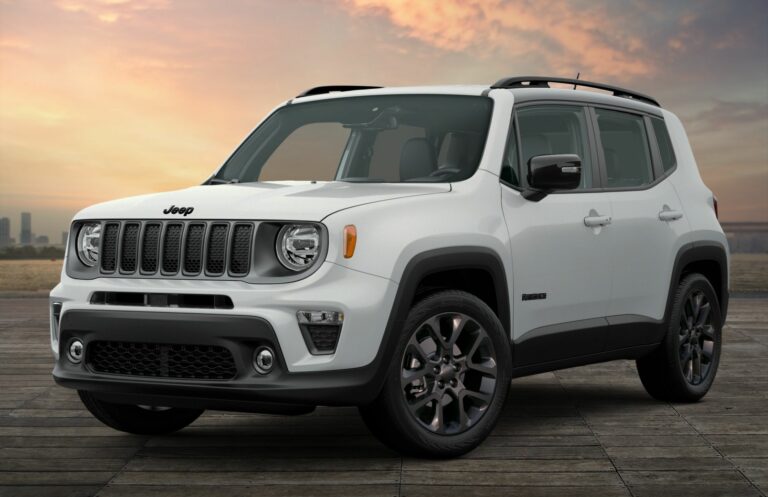Jeep Grand Cherokee Crossbars: Expanding Your Adventure Horizon
Jeep Grand Cherokee Crossbars: Expanding Your Adventure Horizon jeeps.truckstrend.com
The Jeep Grand Cherokee is renowned for its blend of rugged capability and refined comfort, making it a favorite for both off-road enthusiasts and family adventurers. While its interior offers ample space, there are times when your gear simply outgrows the cabin. This is where Jeep Grand Cherokee Crossbars become an indispensable accessory, transforming your vehicle’s roof into a versatile cargo platform. Far more than just two horizontal bars, crossbars are the foundational element of any roof rack system, enabling you to securely transport everything from bikes and kayaks to luggage and camping gear, opening up a world of possibilities for your next journey.
In this comprehensive guide, we’ll delve into the world of Grand Cherokee crossbars, exploring their purpose, the different types available, how to choose and install them, and how to maximize their utility for all your adventures.
Jeep Grand Cherokee Crossbars: Expanding Your Adventure Horizon
What are Crossbars and Why Your Grand Cherokee Needs Them?
At their core, crossbars are sturdy, horizontal bars that span the width of your Jeep Grand Cherokee’s roof, attaching to its existing side rails. They act as the primary mounting point for a wide array of roof-mounted accessories. Without crossbars, most specialized carriers for bikes, skis, or cargo boxes cannot be securely attached to your vehicle.
The Benefits of Equipping Your Grand Cherokee with Crossbars:
- Expanded Cargo Capacity: The most obvious benefit is the significant increase in carrying capacity. Free up precious interior space for passengers and smaller items by moving bulky gear to the roof.
- Secure Transportation: Designed to hold heavy loads at highway speeds, crossbars, when properly installed, ensure your gear remains secure, preventing damage to your vehicle or loss of cargo.
- Versatility for Hobbies: Whether you’re a cyclist, kayaker, skier, camper, or just need extra space for a road trip, crossbars provide the foundation for specific carriers tailored to your passion.
- Protection for Your Interior: Transporting dirty or wet gear (like muddy bikes or sandy beach gear) on the roof keeps your Grand Cherokee’s interior clean and free from damage.
- Enhanced Adventure Capability: With the ability to carry more gear, you can extend your trips, explore more remote locations, and bring along all the equipment needed for a truly memorable adventure.

Types of Jeep Grand Cherokee Crossbars
Understanding the different types of crossbars available is crucial for making an informed decision. They primarily differ in their design, material, and how they attach to your vehicle’s existing roof rails.
-
OEM (Original Equipment Manufacturer) Crossbars:
- Description: These are designed and sold by Jeep (Mopar) specifically for your Grand Cherokee model and year.
- Pros: Guaranteed perfect fit, often integrate seamlessly with the vehicle’s aesthetics, and come with a manufacturer’s warranty.
- Cons: Generally more expensive than aftermarket options, and the design options might be limited.

-
Aftermarket Crossbars:
- Description: Produced by third-party manufacturers (e.g., Thule, Yakima, Rhino-Rack, Rola, CURT), offering a wider range of styles, features, and price points.
- Pros: More variety in design (aerodynamic, heavy-duty), often more affordable, and specialized options for specific needs.
- Cons: Fit can vary, so careful selection based on your Grand Cherokee’s year and roof rail type is essential.

Bar Profile/Shape:
- Square/Round Bars: Traditional design, very strong and versatile, but can generate more wind noise and slightly impact fuel economy.
- Aerodynamic (Aero/Wing) Bars: Feature an airfoil shape that significantly reduces wind noise and drag, leading to better fuel efficiency. They often have integrated T-slots for easy accessory mounting.
Material:
- Aluminum: Lightweight, corrosion-resistant, and very common for modern crossbars, especially aerodynamic designs.
- Steel: Heavier and very strong, often found in more robust or older designs. Can be prone to rust if not properly coated.
Attachment Method (Dependent on your Grand Cherokee’s Roof Rails):
- Raised Side Rails: If your Grand Cherokee has rails with a gap between the rail and the roof, crossbars will clamp around these rails.
- Flush Side Rails: Newer Grand Cherokees often have rails that sit flush with the roof. These require specific crossbar systems that attach to designated points or slots within the flush rail.
Choosing the Right Crossbars for Your Grand Cherokee
Selecting the perfect crossbars involves considering several key factors to ensure compatibility, safety, and optimal performance.
- Vehicle Year and Model: This is paramount. Jeep Grand Cherokee models have evolved, and their roof rail designs have changed significantly over the years (e.g., WK, WK2, WL generations). Ensure the crossbars are explicitly stated as compatible with your Grand Cherokee’s specific year and trim.
- Existing Roof Rail Type: Determine if your Grand Cherokee has raised side rails (with a gap underneath) or flush side rails (integrated into the roofline). This dictates the type of mounting system required.
- Weight Capacity: Every set of crossbars has a maximum weight capacity, as does your vehicle’s roof. Always defer to the lowest weight limit among the crossbars, the roof rails, and the vehicle’s manufacturer specifications (found in your owner’s manual). Exceeding these limits is dangerous.
- Intended Use:
- Light Loads/Occasional Use: More affordable, basic crossbars might suffice.
- Heavy Loads/Frequent Use: Invest in heavy-duty, robust crossbars, especially if considering a rooftop tent.
- Noise/Fuel Economy: If these are concerns, prioritize aerodynamic bars.
- Budget: Prices vary significantly. Set a budget, but remember that quality often correlates with durability and safety.
- Accessory Compatibility: If you already own specific roof rack accessories (e.g., Thule bike rack), ensure the chosen crossbars are compatible with those accessories. Most modern crossbars use standard slots (like T-slots) for versatility.
Installation Guide: Attaching Your Grand Cherokee Crossbars
While specific instructions will vary by manufacturer and crossbar type, here’s a general step-by-step guide for installing crossbars on your Jeep Grand Cherokee:
Tools You Might Need:
- Manufacturer-supplied Allen wrench or Torx key
- Measuring tape
- A second person (highly recommended for safety and ease)
General Installation Steps:
- Read the Instructions: This is the most critical step. Every crossbar system has unique nuances. Familiarize yourself with all components and steps before starting.
- Identify Front and Rear Bars: Crossbars are often different lengths or have specific front/rear designations. Ensure you identify them correctly.
- Position the Towers/Feet: Attach the mounting towers (the parts that connect the bars to the roof rails) to each end of the crossbars. Do not tighten them fully yet.
- Place on Roof: Carefully lift the assembled crossbar system onto your Grand Cherokee’s roof rails. With flush rails, align them with the designated mounting points. With raised rails, position them evenly.
- Measure and Adjust:
- Spacing: Measure the distance between the front and rear crossbars. Most manufacturers provide an optimal spread for stability and accessory compatibility. Ensure they are parallel.
- Centering: Ensure each crossbar is centered on the roof, with equal overhang (if any) on both sides.
- Secure the Clamps/Mounts:
- For Raised Rails: Engage the clamps around the side rails.
- For Flush Rails: Secure the towers into the designated mounting points.
- Tighten Evenly: Systematically tighten all fasteners. Work in stages, going back and forth between sides and front/rear, ensuring even pressure. Do not overtighten, as this can damage components. Many systems have torque indicators or a "click" when tightened correctly.
- Final Check: Gently pull up and push down on the crossbars to ensure they are firmly attached and there’s no wobble. Double-check all bolts for tightness.
Safety Tips:
- Always perform installation on a level surface.
- Be mindful of your vehicle’s paint. Use protective tape if instructed or if you’re concerned about scratches.
- Do not overtighten fasteners.
- After your first drive, especially within the first 50-100 miles, re-check all fasteners for tightness, as components can settle.
Maintenance and Care for Longevity
Proper maintenance ensures your crossbars remain reliable and last for years.
- Regular Inspection: Periodically check all bolts and fasteners for tightness, especially before long trips or after transporting heavy loads.
- Cleaning: Wash your crossbars with mild soap and water, especially after exposure to road salt, dirt, or extreme weather. Avoid harsh chemicals that could damage finishes.
- Lubrication: If your crossbars have moving parts or locks, a silicone-based lubricant can help maintain smooth operation.
- Storage: If you don’t use your crossbars frequently, consider removing them when not in use. This can reduce wind noise and slightly improve fuel efficiency. Store them in a dry, protected area.
Common Accessories and Their Use with Crossbars
Crossbars are the foundation; these accessories unlock their full potential:
- Cargo Boxes/Bags: Provide enclosed, weather-resistant storage for luggage, camping gear, or wet items, keeping them secure and protected.
- Bike Racks: Available in various styles (fork mount, frame mount, wheel mount) to securely transport one or more bicycles.
- Kayak/Canoe Carriers: J-cradles, saddle style, or stacker systems allow safe transport of watercraft.
- Ski/Snowboard Carriers: Clamping mechanisms hold skis and snowboards securely, keeping them away from the vehicle’s interior.
- Paddleboard Carriers: Specialized pads and straps designed for SUPs.
- Roof Top Tents (RTTs): For the ultimate overlanding experience, heavy-duty crossbars are essential to support the weight of an RTT and its occupants.
Potential Challenges and Solutions
While crossbars are incredibly useful, there are a few considerations:
- Wind Noise: Aerodynamic crossbars are designed to minimize this. A wind fairing (a plastic shield attached to the front crossbar) can further reduce noise, especially with square or round bars.
- Fuel Efficiency: Any addition to your vehicle’s roof will create drag, slightly reducing fuel efficiency. Aerodynamic bars and removing them when not in use are the best solutions.
- Security: Many crossbar systems come with integrated locks or are compatible with locking mechanisms to deter theft. Always lock your crossbars and accessories.
- Garage Clearance: Be mindful of your vehicle’s new height, especially with accessories like cargo boxes, when entering garages or low-clearance areas.
- Weight Limits: Reiterate: Never exceed the weight capacity of your crossbars, roof rails, or vehicle. Overloading can lead to dangerous situations and vehicle damage.
Estimated Price Table for Jeep Grand Cherokee Crossbars
Prices for Jeep Grand Cherokee crossbars can vary significantly based on the brand, material, design, and whether they are OEM or aftermarket. The table below provides estimated ranges for common types, but it’s crucial to check current prices from reputable retailers.
| Crossbar Type/Brand Example | Description | Estimated Price Range (USD) | Key Features |
|---|---|---|---|
| OEM Mopar Crossbars | Original Equipment Manufacturer crossbars designed for specific GC models. | $250 – $450 | Perfect fit, often integrated look, Mopar quality assurance. May be specific to raised or flush rails. |
| Thule AeroBlade Edge | Premium aerodynamic aluminum bars, flush-mounted design. | $450 – $650 | Extremely quiet, sleek integrated look, T-slot compatibility, high weight capacity. Specific fit kits for different GC generations. |
| Yakima JetStream | Premium aerodynamic aluminum bars, often with slight overhang. | $400 – $600 | Low wind noise, strong, versatile T-slot system, durable finish. Requires specific base towers for your GC’s roof type. |
| Rhino-Rack Vortex/Pioneer | Durable and versatile aluminum bars, often with heavy-duty options. | $350 – $550 | Excellent for heavy loads, various bar profiles (Vortex for aero, Pioneer for platform), strong T-slot system. Good for off-road enthusiasts. |
| Budget Aftermarket | Generic or lesser-known brand crossbars, typically steel or basic aluminum. | $100 – $250 | Cost-effective solution for occasional use. May have more wind noise and potentially lower weight capacity. Check reviews carefully for fit and durability. Often simple clamp-on designs for raised rails. |
Note: Prices are estimates and subject to change based on retailer, promotions, and specific Grand Cherokee model year compatibility.
Frequently Asked Questions (FAQ) about Jeep Grand Cherokee Crossbars
Q1: Do all Jeep Grand Cherokees come with roof rails?
A1: Not all Grand Cherokees come with roof rails. While many trims do, especially higher trims or those with specific packages, some base models might not. Always check your specific vehicle or its specifications. If you don’t have side rails, you cannot install traditional crossbars.
Q2: Can I install Grand Cherokee crossbars myself?
A2: Yes, most crossbar systems are designed for DIY installation and come with detailed instructions and necessary tools. It’s often a straightforward process, but having a second person can make it much easier, especially when lifting the bars onto the roof.
Q3: How much weight can Grand Cherokee crossbars hold?
A3: The weight capacity varies significantly by the specific crossbar model and your Grand Cherokee’s roof limits. Always check the manufacturer’s specifications for both the crossbars and your vehicle’s owner’s manual. Generally, capacities range from 150 lbs to 220 lbs for dynamic loads (while driving), and significantly more for static loads (when parked, like with a rooftop tent). Never exceed the lowest stated limit.
Q4: Do crossbars affect fuel efficiency and wind noise?
A4: Yes, any item on your roof creates aerodynamic drag, which can slightly reduce fuel efficiency. Wind noise can also increase. Aerodynamic (aero/wing-shaped) crossbars are designed to minimize both, and a wind fairing can further reduce noise. Removing crossbars when not in use can help improve fuel economy.
Q5: Are crossbars universal for all Grand Cherokee models?
A5: No. Crossbars are specific to the generation and sometimes even the trim level of your Grand Cherokee due to variations in roof rail design (raised vs. flush, and their specific dimensions/mounting points). Always ensure the crossbars are compatible with your specific year and model.
Q6: What’s the difference between raised and flush roof rails, and why does it matter for crossbars?
A6: Raised roof rails have a visible gap between the rail and the roof of the vehicle, allowing crossbar feet to clamp underneath. Flush roof rails sit directly on the roof with no gap and typically have specific integrated mounting points or slots for the crossbars to attach to. This difference dictates the type of crossbar mounting system you’ll need.
Q7: Can I leave my crossbars on all the time?
A7: You can, but it’s generally recommended to remove them when not in use, especially if you have square or round bars. This helps improve fuel economy, reduces wind noise, and can prolong the life of the crossbars by reducing exposure to elements.
Conclusion: Unlock Your Grand Cherokee’s Full Potential
Jeep Grand Cherokee crossbars are more than just an accessory; they are a gateway to expanded adventures and enhanced utility. By providing a secure and versatile platform, they allow you to carry the gear that makes your outdoor pursuits possible, freeing up interior space and protecting your vehicle’s cabin. Whether you’re hauling bikes to the trail, kayaks to the lake, or extra luggage for a family road trip, choosing the right crossbars and understanding their proper use and maintenance will ensure countless miles of safe and convenient transport. Invest wisely, install correctly, and your Grand Cherokee crossbars will serve as a reliable foundation for all your journeys, helping you truly explore beyond the pavement.





